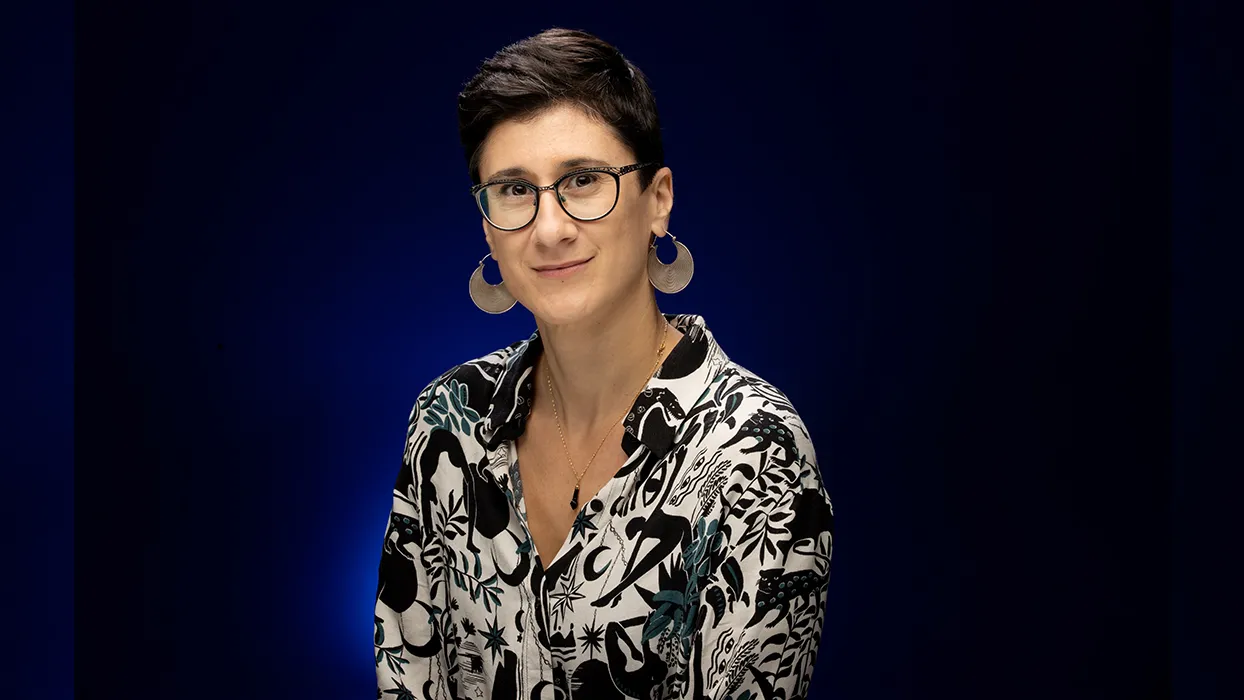Joe Gutierrez | Office of Strategic Communication | (909) 537-3007 | joeg@csusb.edu

Sometimes a tiny plant or a small shell can be a big time machine.
For Department of Biology assistant professor Lúa López, studying a small plant often considered a weed or a mollusk prized as a culinary delicacy can do what the “Back to the Future” movies could never do in real life: provide scientific insights from the past that can help species in the present survive extinction in the future.
Now, with funding from the National Science Foundation and the California State University system, López is moving forward with research in the field of ancient genomics, or the study of the genetics of historical or extinct species. She will study preserved samples of a flowering plant commonly known as thale cress (Arabidopsis thaliana) that is found across Eurasia and Africa and was introduced to the United States 200 to 300 years ago. She will also study abalone, an endangered marine snail that was widely harvested for food and once abundant off the coast of California. Her work will trace how such species adapted and evolved as they grappled with environmental and man-made changes.
“It’s like going back in time and seeing exactly what genetic changes happen,” said López.
López is an evolutionary ecologist who focuses on molecular biology and studies how organisms change across time and space in relation to the environment. She is also the curator of the biology department’s Herbarium, founded in 1969, which primarily houses plant specimens from San Bernardino and Riverside counties.
López was awarded a three-year grant totaling more than $500,000 from the National Science Foundation, funding that is geared for Minority-Serving Institutions such as CSUSB. The funding will also allow López to hire a postdoc for two years to support research activities.
López and her students will analyze Arabidopsis samples currently stored through the Consortium of California Herbaria, which can access more than 50 collections of preserved plant specimens. This plant species was chosen because biologists consider it a “model organism”; it is ideal for research because its complete set of genes have been studied and its complete development cycle is known. She will study how the plant adapted to colder temperatures and more carbon dioxide when the species began to migrate from low altitudes to high altitudes.
“This research will help us develop a fuller understanding of exactly how these changes occur,” López said. “What kinds of genes are involved in this process? Do other plants have this mutation?”
Information about what genetic mechanisms play a role in such evolutionary changes could help guide government agencies, conservationists and others in efforts to preserve species facing environmental pressures.
The grant will also fund outreach efforts targeting K-12 students to cultivate more awareness of the diversity of plant species in the community and how plants relate to cultural practices. Such efforts could involve inviting students and their families to campus as well as having participants create herbarium vouchers, which are pressed and dried plant samples typically stored in permanent and accessible facilities that are used as important research tools.
López was previously also awarded a roughly $15,000 California State University Program for Education and Research in Biotechnology (CSUPERB) grant. These funds will be used to study the shells of the black and white abalone species from the time period between 1800 and 2010 that are currently stored at various national history collections, such as at UC Santa Barbara and the National Oceanic and Atmospheric Administration.
She will analyze what type of genetic changes occurred as a result of a century of overfishing. The knowledge gained could be used to develop conservation efforts for abalone, which are currently endangered and have been illegal to fish since the 1990s.
“I am very excited that our students will be able to participate in this exciting research,” López said. “Very few researchers in this country are working in ancient genomics, and it is still a relatively new field with many opportunities for discoveries.”
Her research will also be shared with the National Oceanic and Atmospheric Administration, the California Department of Fish and Wildlife, and other agencies involved in preserving rare and endangered species.
“I am very excited about the many opportunities for undergraduate research and technical training our students will receive as a result of Dr. López’s work,” said Sastry Pantula, dean of the College of Natural Sciences. “This type of research promotes active learning and project-based learning, which is so valuable in making science engaging, exciting and stimulating for our biology majors. It is also very gratifying that the CSU and the National Science Foundation see value and relevance in Dr. López’s research and how impactful it will be for our students, in particular for our low-income and historically underrepresented students.”
To learn more about López’s research, visit her LuaLab webpage. To learn more about the College of Natural Sciences biology programs, visit the Department of Biology homepage.